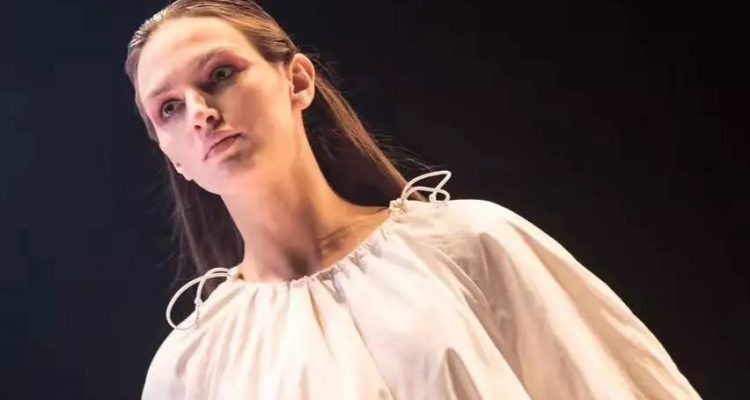Introduction:
Clothing has always played a crucial role in storytelling, and its significance becomes even more pronounced in the realms of film, art, and stage performance. Costume design is an art form that goes beyond mere aesthetics; it helps to create characters, establish time periods and settings, and evoke emotions. In this article, we will explore the multifaceted role of clothing in these creative mediums, shedding light on the impact of costume design and its ability to enhance narratives and captivate audiences.
Clothing in Film:
1.1 Character Development:
Costumes serve as visual cues that provide insights into a character’s personality, background, and motivations. The choices made by costume designers can convey social status, profession, era, and even psychological traits. Whether it’s the elegance of Audrey Hepburn’s iconic little black dress in “Breakfast at Tiffany’s” or the ragged attire of Tom Hanks in “Cast Away,” clothing helps to shape and define characters, making them relatable and memorable.
1.2 Establishing Time and Place:
Through meticulous research and attention to detail, costume designers transport viewers to specific time periods and settings. From the extravagant costumes of Marie Antoinette in Sofia Coppola’s film to the gritty streetwear of 1990s Los Angeles in “Boyz n the Hood,” clothing creates an immersive experience that enhances the authenticity and believability of the story being told.
1.3 Symbolism and Subtext:
Costumes can be laden with symbolism and subtext, adding layers of meaning to a film’s narrative. For example, in Quentin Tarantino’s “Kill Bill,” Uma Thurman’s yellow jumpsuit represents her transformation from victim to avenger. Similarly, the red hooded cloak worn by Little Red Riding Hood in various adaptations signifies innocence, vulnerability, and the dangers that lurk in the world.
Clothing in Art:
2.1 Expression of Identity:
In visual art, clothing is a powerful tool for expressing individual or collective identities. Artists throughout history have used clothing as a means to comment on societal norms, challenge conventions, or convey personal experiences. Frida Kahlo’s self-portraits often featured traditional Mexican attire, symbolizing her connection to her heritage and asserting her identity as a Mexican woman.
2.2 Cultural Commentary:
Clothing in art can also offer social and cultural commentary, highlighting issues of gender, class, and power dynamics. Photographers like Cindy Sherman use costumes and fashion styling to explore themes of identity and representation, blurring the lines between reality and fiction. Through their work, they challenge societal expectations and question the construct of beauty.
2.3 Provoking Emotions:
Clothing in art can evoke a myriad of emotions, whether through its use of color, texture, or symbolism. The expressive brushstrokes of Vincent van Gogh’s “The Starry Night” create an ethereal atmosphere, while the flowing robes and vibrant colors in Gustav Klimt’s “The Kiss” exude sensuality and passion. Clothing becomes a vehicle for eliciting emotional responses and engaging viewers on a visceral level.
Clothing in Stage Performance:
3.1 Creating Characters:
On stage, costume design is essential for bringing characters to life. From the elaborate costumes of Broadway musicals to the minimalist attire of avant-garde theater, clothing aids in the transformation of actors into their respective roles. Each garment is carefully selected to reflect the character’s personality, story arc, and relationship to other characters.
3.2 Enhancing Visual Spectacle:
In large-scale productions, costumes contribute to the visual spectacle, captivating audiences with their intricate designs and craftsmanship. From the fantastical creatures in “The Lion King” to the shimmering gowns in “The Phantom of the Opera,” costumes become an integral part of the overall aesthetic and contribute to the immersive experience of live theater.
3.3 Conveying Themes and Concepts:
Costumes in stage performances can convey themes, concepts, and even social or political messages. In contemporary dance, for instance, clothing may be used to explore ideas of gender, identity, or societal constraints. Through movement and costume choices, performers challenge traditional notions of beauty and inspire conversations about the human experience.
Conclusion:
From the silver screen to art galleries to the grand stages of theater, clothing plays a pivotal role in creating immersive and impactful experiences for audiences. Costume design serves as a visual language that enhances storytelling, establishes atmosphere, and evokes emotions. Through careful consideration of character, time, place, symbolism, and cultural context, costume designers bring narratives to life and provide audiences with a deeper understanding of the stories being told. Let us celebrate the artistry of costume design and its ability to ignite our imagination, transport us to different worlds, and foster a deeper appreciation for the power of clothing in film, art, and stage performance.


Leave a Reply